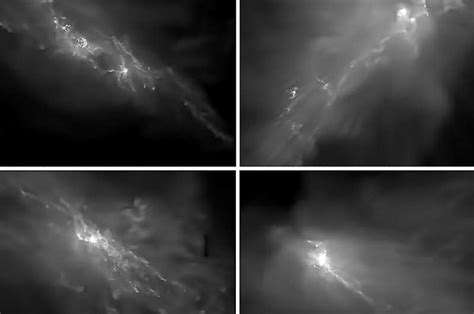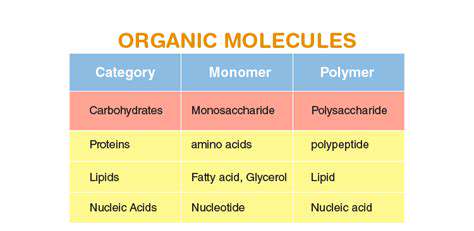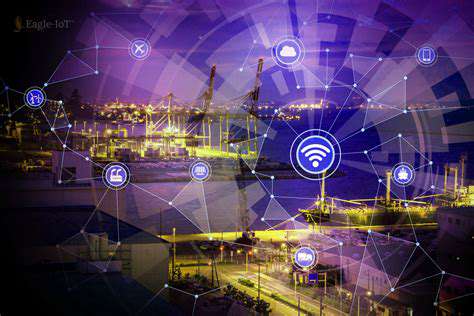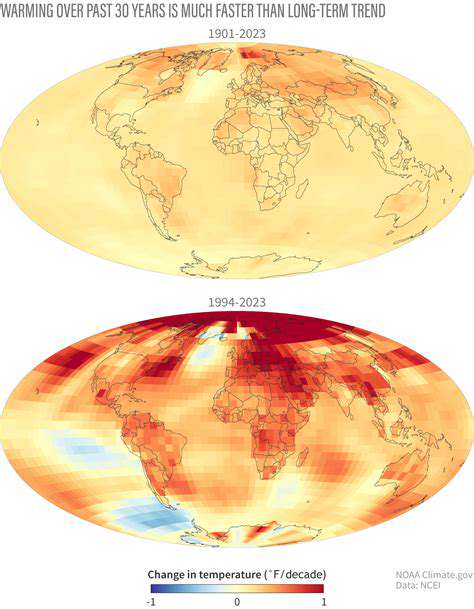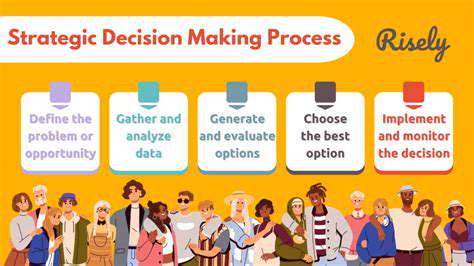
Applications of Satellite Data in Diverse Industries

Remote Sensing of Agriculture
Satellite imagery provides invaluable insights into agricultural practices, crop health, and yield estimations. By analyzing the spectral characteristics of vegetation, scientists can identify areas of stress, such as drought or nutrient deficiencies, allowing for targeted interventions. This early detection of problems is crucial for optimizing resource allocation and maximizing agricultural output. Monitoring crop growth and development throughout the growing season allows for proactive adjustments to irrigation, fertilization, and pest control strategies.
Furthermore, satellite data can track the spatial distribution of different crops, enabling precise assessments of cultivated land use and providing valuable information for agricultural planning and policy making. Detailed analysis of these data sets can reveal patterns of land use change over time, which can be used to understand the impact of agricultural practices on the environment.
Monitoring Urbanization and Land Use Change
Satellite imagery offers a powerful tool for monitoring the dynamic nature of urban areas. By tracking changes in land cover over time, we can identify patterns of urban sprawl, deforestation, and other land use transformations. This information is crucial for urban planners and policymakers to understand the impacts of development and make informed decisions about infrastructure development and resource management.
The ability to track these changes over extended periods allows for the identification of trends and the prediction of future land use scenarios. This foresight enables proactive measures to mitigate potential negative impacts of urbanization, such as environmental degradation and infrastructure strain.
Disaster Management and Relief Efforts
Satellite imagery is a critical component in disaster management and relief efforts. Rapidly capturing images of affected areas allows for immediate assessments of the extent of damage and the identification of areas requiring immediate assistance. This information is invaluable for coordinating rescue efforts, allocating resources, and providing humanitarian aid.
The high spatial and temporal resolution of some satellite imagery allows for detailed monitoring of the impact of events like floods, earthquakes, and wildfires. This enables aid organizations and governments to prioritize their responses and ensure that relief efforts reach the most vulnerable populations effectively.
Environmental Monitoring and Conservation
Satellite data plays a vital role in environmental monitoring and conservation efforts. By tracking changes in vegetation cover, deforestation rates, and water resources, we can identify areas of environmental concern and implement targeted conservation strategies. This information is crucial for understanding the impacts of human activities on ecosystems and for developing sustainable solutions.
Monitoring deforestation, for example, allows for the identification of illegal logging and the enforcement of environmental regulations. Similarly, satellite data can track changes in water quality and identify pollution sources, providing valuable information for water management and conservation.
Mapping and Surveying
Satellite data provides accurate and comprehensive mapping and surveying capabilities. High-resolution imagery allows for the creation of detailed maps of terrain, infrastructure, and natural resources. This information is essential for various applications, including infrastructure planning, land management, and resource exploration.
By capturing detailed information about the location and characteristics of geographic features, satellite imagery provides a critical foundation for creating accurate and up-to-date maps, which are essential for a wide range of applications, from urban planning to environmental management.
Navigation and Positioning
Satellite-based navigation systems, such as GPS, rely on signals from satellites to determine precise location information. This technology has revolutionized various fields, from transportation and logistics to surveying and mapping. The accuracy and reliability of these systems are critical for ensuring safe and efficient navigation in diverse environments.
The global coverage and continuous operation of these satellite systems make them indispensable for many applications. Real-time location information is vital for tasks such as fleet management, precision agriculture, and disaster response.
Data Processing and Visualization Techniques for Effective Insights

Data Collection and Preparation
Efficient data collection is paramount to any successful data analysis project. This involves defining the specific data needed, identifying reliable sources, and developing strategies for acquiring the data. Proper data cleaning is crucial for ensuring the accuracy and reliability of the analysis. This includes handling missing values, correcting inconsistencies, and transforming data into a suitable format for analysis.
Data preparation is more than just cleaning; it also involves transforming the raw data into a usable format. This may include tasks like data transformation, aggregation, and normalization, depending on the specific analysis goals and the structure of the collected data. Standardizing formats across different sources is vital for accurate analysis.
Data Exploration and Analysis
Understanding the characteristics of your data is essential before applying any complex models. Exploratory data analysis (EDA) involves techniques like calculating descriptive statistics, creating visualizations, and identifying patterns and trends in the data. This step helps in understanding the relationships between variables and identifying potential outliers or anomalies.
Statistical modeling, such as regression analysis or clustering, can reveal underlying relationships and structures within the data. This analysis can uncover insights that might not be immediately apparent through simple visualizations. Identifying key relationships is crucial for informed decision-making.
Data Transformation and Wrangling
Data transformation often involves converting data from one format to another, or applying mathematical operations to create new variables. This step is crucial for ensuring the data is in a suitable format for the chosen analysis techniques. For example, transforming categorical data into numerical representations or standardizing variables can significantly improve the performance of machine learning models.
Data wrangling involves a variety of techniques to prepare the data for analysis. Handling missing values, resolving inconsistencies, and transforming data into a suitable format are all part of this process. Accurate data transformation is essential for the reliability of downstream analysis. Proper wrangling can make the difference between a successful project and one plagued by flawed results.
Data Visualization Techniques
Data visualization is a powerful tool for communicating insights derived from data analysis. Choosing the right visualization technique, such as charts, graphs, or maps, is crucial for effectively conveying the information to the intended audience. Visualizations can reveal patterns, trends, and relationships that might be hidden in raw data.
Effective data visualization techniques go beyond simply plotting data points. They consider factors like color palettes, axis scales, and labeling to ensure clarity and accuracy. Good visualizations make complex data easily understandable and facilitate effective communication of key findings. They are essential for informing stakeholders and driving informed decisions.
Model Building and Evaluation
Data modeling involves selecting and applying appropriate statistical or machine learning models to the processed data. The choice of model depends on the specific research question and the characteristics of the data. Model selection should be based on rigorous evaluation of performance metrics. This step is crucial for drawing valid conclusions from the data.
Evaluating model performance is critical to ensuring that the model accurately reflects the underlying relationships in the data. Common evaluation metrics include accuracy, precision, recall, and F1-score. Using appropriate evaluation metrics allows for a fair comparison of different models.
Deployment and Communication of Results
Deploying the results of the data analysis involves translating the insights into actionable recommendations and presenting them to stakeholders. Effective communication is key to ensuring that the findings are understood and utilized. This requires clear and concise presentation of the results, using visualizations and summaries to highlight key findings.
Presenting your analysis findings to non-technical audiences requires tailoring your communication to the specific audience. Using accessible language and avoiding technical jargon is essential for effective communication. Communicating insights effectively is just as important as the technical analysis itself. This ensures that the project's value is fully realized.
The Future of Satellite Data Analytics for Business Growth
Harnessing the Power of Satellite Imagery
Satellite imagery provides a unique perspective on the Earth's surface, offering valuable insights into various aspects of business operations. From monitoring crop health and identifying potential yield variations to tracking infrastructure development and assessing environmental impacts, satellite data analytics provides a comprehensive view that traditional methods often miss. This allows businesses to make more informed decisions, optimize resource allocation, and ultimately drive growth.
The ability to analyze vast quantities of satellite data in real-time is transforming industries. This powerful tool can be used for everything from precision agriculture to urban planning, providing a wealth of information that is crucial for sustainable and profitable business practices.
Predictive Analytics for Informed Decision-Making
Satellite data analytics is moving beyond simply observing current conditions. By leveraging sophisticated algorithms and machine learning techniques, businesses can now predict future trends, such as changes in weather patterns, crop yields, or market demand. This predictive capacity allows businesses to proactively adjust strategies and mitigate potential risks, ensuring they are always one step ahead.
Optimizing Resource Allocation and Efficiency
Detailed insights from satellite data enable businesses to optimize resource allocation. For example, farmers can use satellite imagery to identify areas of their fields needing extra water or fertilizer, leading to more efficient use of resources and potentially higher crop yields. Similarly, urban planners can use satellite data to assess traffic flow, identify areas of high pedestrian activity, and plan infrastructure improvements accordingly.
By pinpointing areas needing attention, companies can save money, minimize waste, and enhance the overall efficiency of their operations.
Enhancing Supply Chain Visibility and Management
Satellite data analytics can provide critical insights into the complexities of supply chains. Tracking the movement of goods, monitoring storage facilities, and identifying potential bottlenecks are all possible using this data. This enhanced visibility allows businesses to proactively address issues, improve delivery times, and reduce operational costs associated with logistics. Improved supply chain visibility is crucial for ensuring timely delivery and minimizing delays.
Addressing Environmental Challenges with Sustainable Practices
Satellite data plays a vital role in addressing environmental challenges. Monitoring deforestation, tracking pollution levels, and assessing the impact of climate change are all possible with this technology. By understanding these environmental factors, businesses can implement sustainable practices, reduce their ecological footprint, and contribute to a healthier planet. This proactive approach to environmental concerns is crucial for long-term success in today's market.
The Future of Data Integration and Collaboration
The future of satellite data analytics lies in seamless integration with other data sources. Combining satellite imagery with sensor data, weather information, and market trends will create a more comprehensive understanding of various business operations. Collaboration between different sectors and organizations will be crucial in unlocking the full potential of this technology, enabling businesses to make data-driven decisions with greater confidence and precision.
This integration will pave the way for more robust and accurate business intelligence, ultimately boosting growth and profitability in the years to come.




